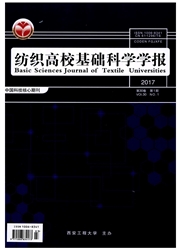

 中文摘要:
中文摘要:
为求解线性方程组Ax=b,常将矩阵A分解为A=M-N,这里M为非奇异矩阵.已知得到的迭代格式x(k+1)=M-1Nx(k)+M-1b(k=0,1,2,…)对任意初始向量x(0)都收敛到解x=A-1b,当且仅当M-1N的谱半径ρ(M-1N)〈1,其中M-1N称为迭代矩阵.因此,估计ρ(M-1N)的界限就成了一个热点问题.针对线性方程组的系数矩阵为严格双α-对角占优矩阵的情况,讨论了线性方程组求解SOR迭代方法的收敛性,给出了迭代法的一个收敛性定理,由此得到了几个重要的推论.所得到的结果不仅适用于这几类矩阵,还适用于广义严格双α-对角占优矩阵类.解决了以往讨论迭代矩阵谱半径的估值问题,且使用方便.最后举例说明了所给结果的优越性.
 英文摘要:
英文摘要:
Abstract: For solving a system of linear equat/ons of Ax = b ,A into A = M- N is often splited, where M is non-singular. It is known that x(k+1)=M-1Nx(k)+M-1b(k=0,1,2,…)converges to the solution x =A^-1b for each x^(0) if and only if spectral radius p( M^-1 N) 〈 1 ,the matrix M^-1 Nis called an iterative matrix. It is easy to see estimates for bounds for p(M^-1N )are of interest. Some iteration methods for solving linear system are studied,when coefficient matrix is doubly a-diagonal strictly dominance, and a convergence theorem and some corollaries are given. Obtained results are applicable for doubly a-diagonal strictly dominance matrix, and for generalized diagonal strictly dominance matrix also. The results not only is that problem of estimates of upper bounds of the spectral radius for some iteration matrices is solved but also convenient for apply. Finally, two numerical examples are given for illustrating advantage of results.
 同期刊论文项目
同期刊论文项目
 同项目期刊论文
同项目期刊论文
 期刊信息
期刊信息
